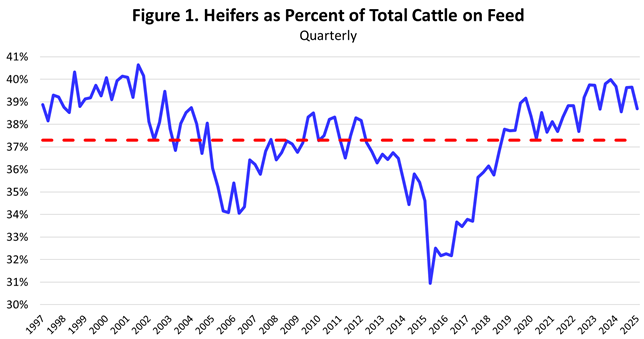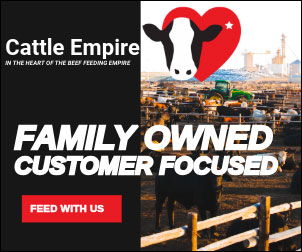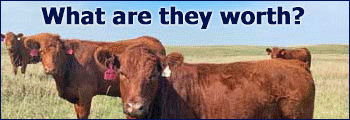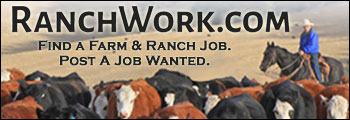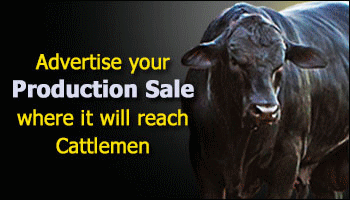Derrell S. Peel, Oklahoma State University
The January USDA-NASS Cattle on Feed report shows a feedlot inventory of 11.823 million head, down 0.9 percent year over year. January feedlot inventories were down from December levels meaning that December is the likely seasonal peak in feedlot numbers this season. Feedlot inventories typically peak in the winter, usually from December to February but as early as November and as late as April.
December marketings were about as expected, up 1.0 percent compared to one year earlier. However, December 2024 had one extra business day compared to 2023, so daily average marketings were down 3.8 percent year over year. For all twelve months of 2024, feedlot marketings were down 0.2 percent from the previous year.
December placements were down 3.3 percent year over year. Placements in December were lower than expected and outside the range of pre-report estimates. For all twelve months of the year, total placements were down 1.6 percent from the previous year.
Although marketings were down slightly, the slower pace of marketing decreases compared to placement decreases explains how feedlots were able to maintain inventories on average fractionally higher year over year each month in 2024. Even with fewer placements, the reduced turnover rate resulting from increased days on feed allowed feedlots to hold average monthly inventories about equal to the previous year. With the slower turnover rate in place, feedlots will likely see inventories fall in 2025 with declining placements. Days on feed in feedlots will likely remain large but are unlikely to continue increasing enough to hold feedlot inventories as tight feeder supplies become more apparent.
The January Cattle on Feed report also included the quarterly breakdown of steers and heifers in feedlots. Steers on feed were up 0.7 percent from one year ago while heifers on feed were down 3.4 percent year over year. Heifers accounted for 38.7 percent of feedlot inventories, down from 39.7 percent in October (See Figure 1 above).
While the decrease in heifers on feed is welcome from the perspective of potential herd rebuilding, Figure 1 shows that the decrease is not yet enough to suggest a sustained downtrend in heifer feeding. Similarly, the nearly one percent decrease in feedlot inventories may indicate further decreases in the feedlot total but this modest decrease for just one month is not enough to confirm a declining trend in feedlot inventories. By the time we get to the March quarterly numbers, both heifer feeding and overall feedlot inventory trends may be clearer.
